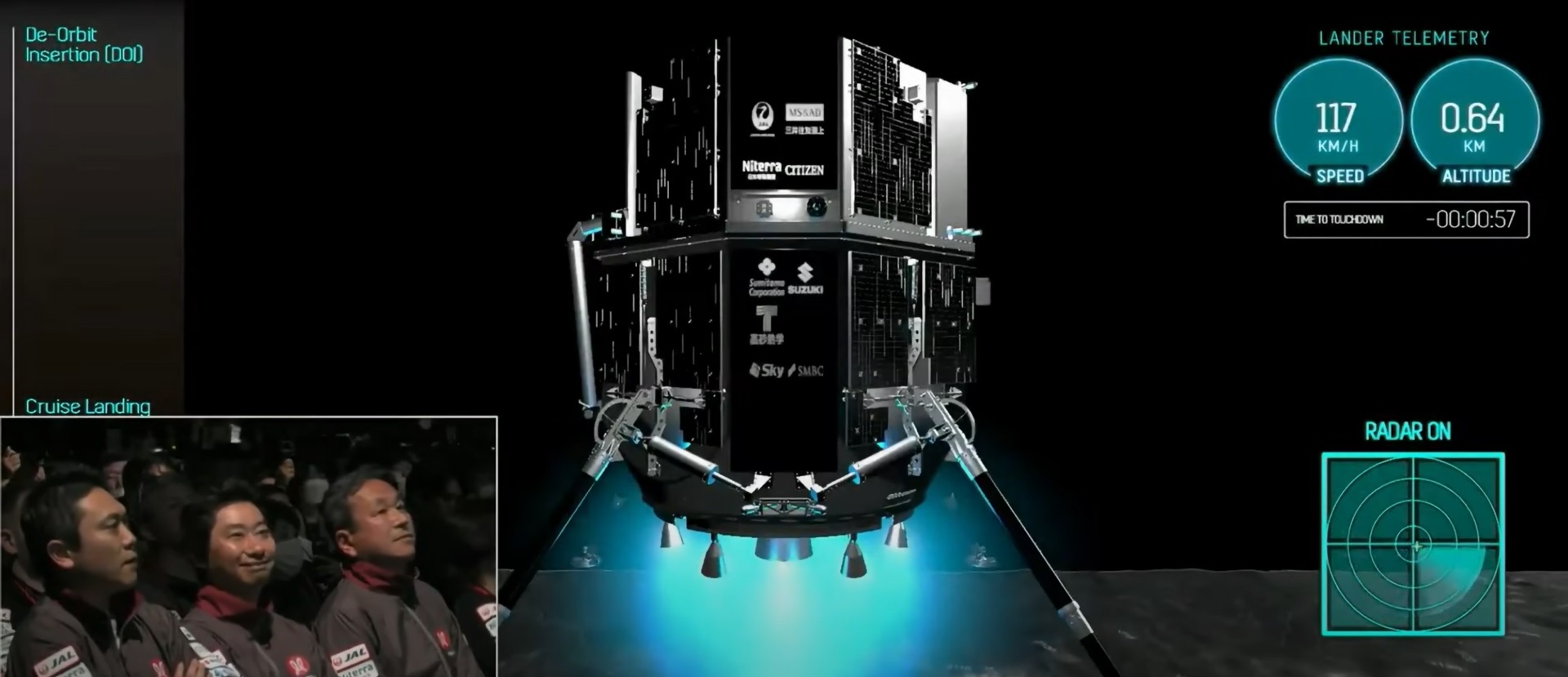A lunar lander built and operated by ispace, a Japanese startup, descended to the surface of the moon today after a months-long journey — but went out of contact and was presumed lost.
“We have to assume that we could not complete the landing on the lunar surface,” ispace CEO Takeshi Hakamada said during a webcast of the Hakuto-R mission’s final stages.
Ground controllers at the Hakuto-R Mission Control Center in Tokyo continued trying to re-establish communications nevertheless, and Hakamada said his company would try again.
“We are very proud of the fact that we have achieved many things during this Mission 1,” he said. “We will keep going. Never quit the lunar quest.”
Hakuto-R — which takes its name from the Japanese word for a mythical white rabbit that lives on the moon — tested the technologies and procedures for commercial deliveries to the lunar surface.
The refrigerator-sized robotic probe was sent into space in December aboard a SpaceX Falcon 9 rocket and traced a leisurely low-energy trajectory to lunar orbit.
Earlier this week, ispace showed off a photo of Earth’s disk hanging above the lunar horizon, captured by the probe as it orbited the moon at an altitude of about 62 miles (100 kilometers). The shot showed the moon’s shadow darkening a spot on the Pacific Ocean during the total solar eclipse of April 20.
Hakuto-R was programmed to descend to 54-mile-wide Atlas Crater, in the northeast quadrant of the moon’s near side, and deploy two mini-rovers for surface exploration. Other payloads would have conducted scientific experiments for government and commercial space efforts.
The last telemetry shared by ispace’s mission control team during today’s webcast indicated that the spacecraft was descending at a speed of 20.5 mph from an altitude of 295 feet. A persistent loss of contact would suggest that the probe was damaged or destroyed on impact.
Ispace traces its roots to the Google Lunar X Prize, which set aside $30 million in rewards for commercial moon landing efforts in 2007. The top prize went unwon and was withdrawn in 2018, but Team Hakuto reorganized as ispace and continued working on its lunar lander.
The company’s backers include Airbus Ventures, Suzuki Motor and Japan Airlines. It has more than 200 employees.
A successful landing would have made ispace the first commercial venture to put a working spacecraft on the moon. In 2019, a privately funded effort sent the Israeli-built Beresheet lander to the moon — but the probe crashed.
Two U.S. companies — Astrobotic and Intuitive Machines — are gearing up to send probes to the lunar surface within the next year, with backing from NASA’s Commercial Lunar Payload Services program, or CLPS.
Ispace is part of another CLPS-supported project that’s aimed at landing a probe on the moon’s far side by 2025. The company is also working on Mission 2 of its Hakuto-R moon program, which is planned for launch as early as next year.

